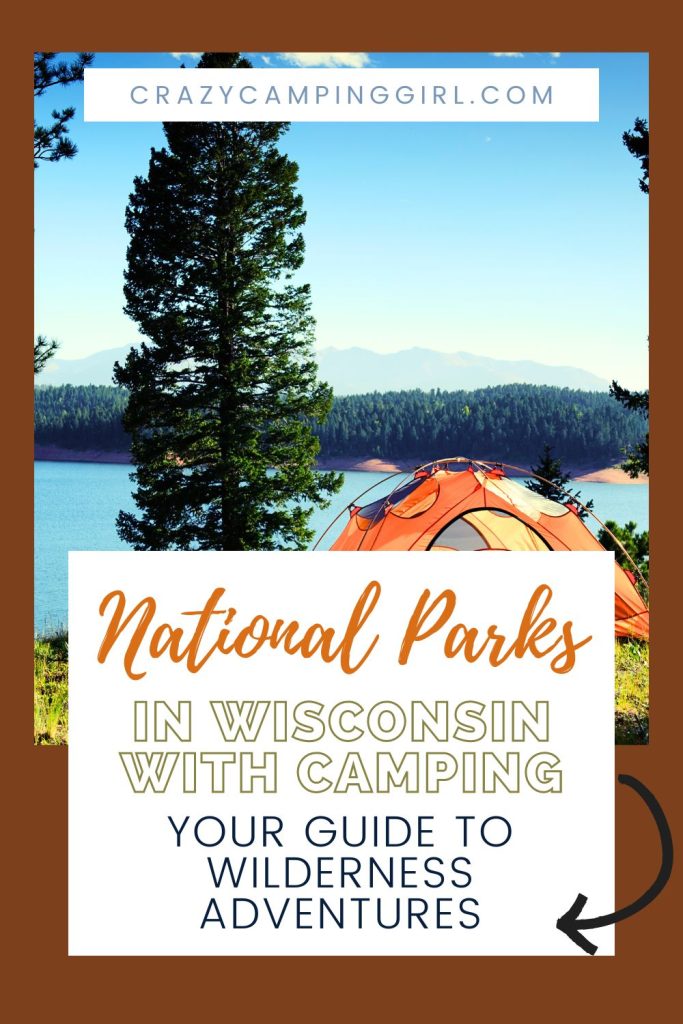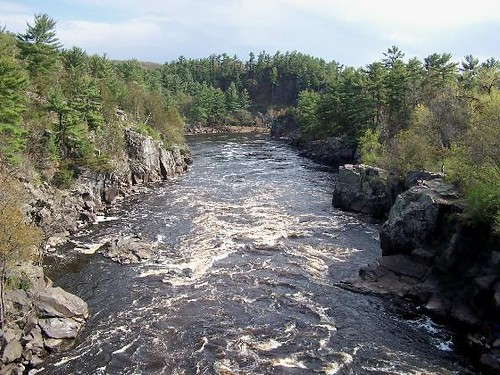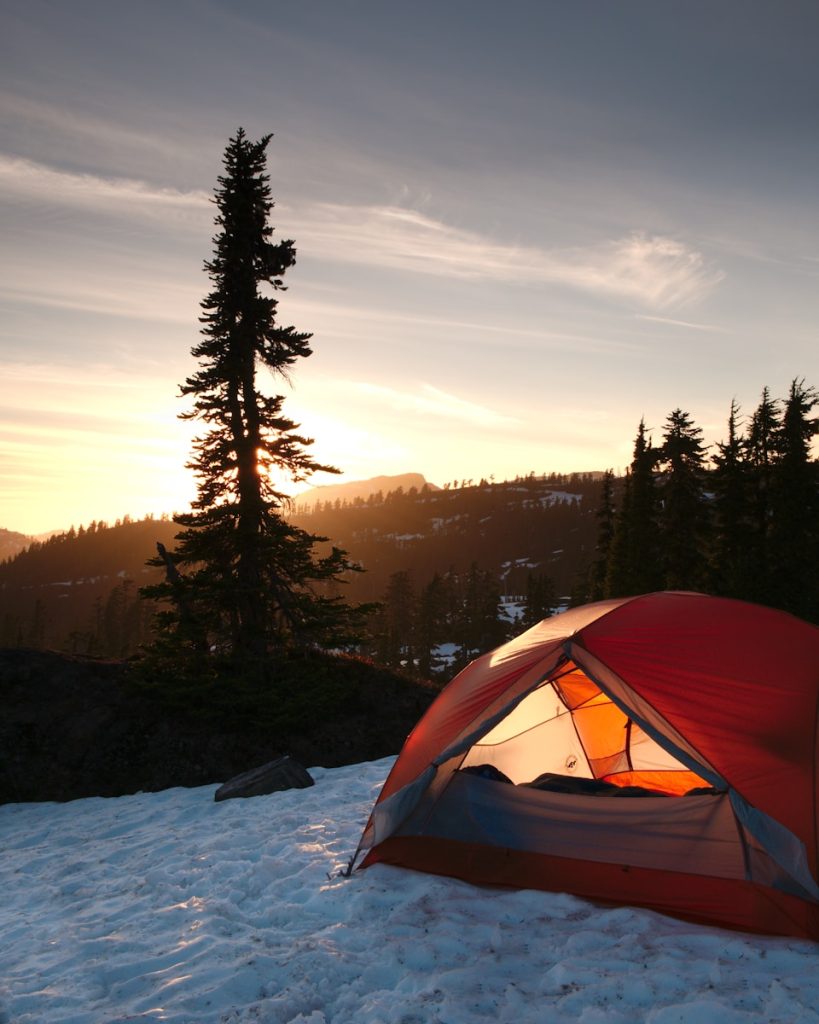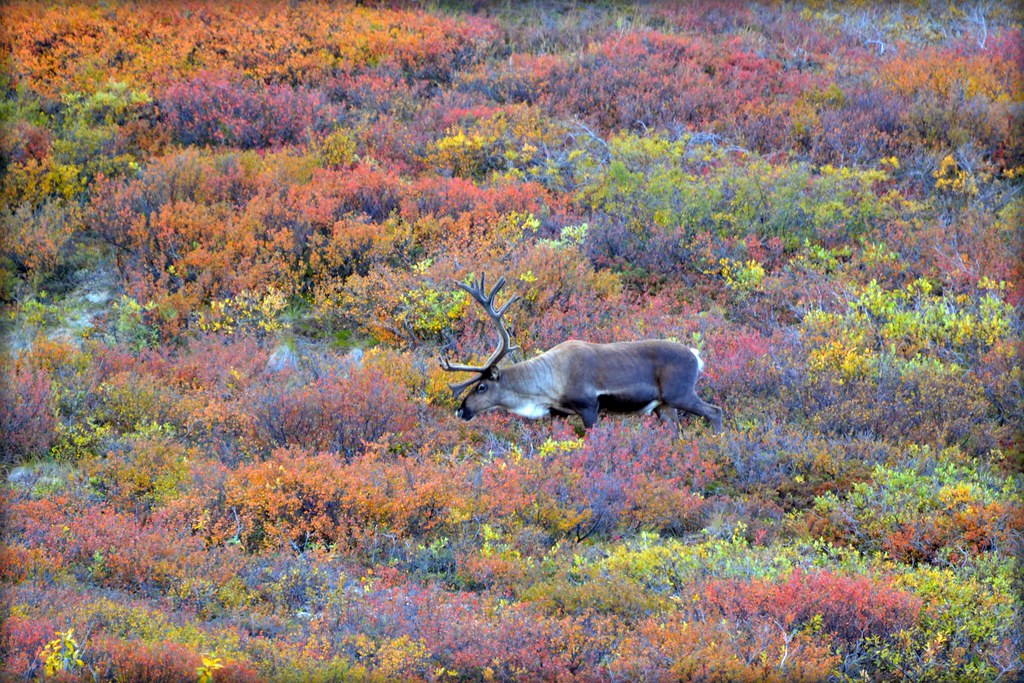
National Parks in Wisconsin with Camping: Your Guide to Wilderness Adventures
We may earn money or products from the companies mentioned in this post.
Wisconsin, with its lush forests and sparkling lakes, offers some of the most picturesque camping experiences in the United States. If you’re a camping enthusiast, the state’s national parks in Wisconsin with camping facilities should be on your radar. You’ll find a variety of camping options that cater to different preferences, whether you seek the rustic appeal of backcountry sites or the comfort of developed campgrounds with amenities like electric hookups.

The Apostle Islands National Lakeshore and the Saint Croix National Scenic Riverway stand out as prime camping destinations. At the Apostle Islands, you can set up camp on one of the remote islands and enjoy secluded beaches and starry skies.
Meanwhile, the Saint Croix Riverway offers over 200 miles of clean, fishable water, perfect for a day of paddling followed by a relaxing evening at a riverfront campsite. Discover the unique beauty of Wisconsin’s national parks while immersing yourself in the outdoor experience.
Overview of Wisconsin’s National Parks
Wisconsin is home to a varied range of national parks, each offering unique camping experiences amidst the backdrop of the state’s rich natural beauty. As you plan your outdoor adventure, consider these highlights of what the national parks in Wisconsin with camping and all they have to offer.
Camping Opportunities
- Apostle Islands National Lakeshore: Find serenity among the 21 islands with camping available on 19 islands. Experience tranquil shorelines and crystal-clear waters.
- Ice Age National Scenic Trail: Hike and camp along a trail that showcases landscapes shaped by glacial forces over 12,000 years ago.
Scenic Beauty and Activities
- Saint Croix National Scenic Riverway: Enjoy camping, paddling, and fishing along these pristine waterways.
- Big Bay State Park on Madeline Island (part of the Apostle Islands): Offers electrical campsites, showers, flush toilets, and is accessible with a beach wheelchair.
Outdoor Entertainment
Campsites in these parks often include amenities such as:
- Swimming beaches
- Picnic areas and gazebos
- Ball fields and game areas
Visitor Impact
These national parks not only preserve Wisconsin’s natural and cultural treasures but also contribute to the local economy with the influx of visitors annually.
Discover the joy of connecting with nature in the diverse and expansive national parks of Wisconsin. Whether you’re looking for a forest to explore, a beach to relax on, or a river to canoe, Wisconsin’s national parks provide an array of outdoor experiences for you to enjoy.
Popular National Parks in Wisconsin
Your adventures in Wisconsin’s great outdoors are not complete without visiting its national parks. Here, you can engage in an array of recreational activities from camping to hiking amidst stunning natural scenery.
Apostle Islands National Lakeshore
Location: Northern Wisconsin on Lake Superior
Activities: Camping, Kayaking, Hiking, Fishing
Camping: Yes – tent and RV sites available, amenities include fire rings and picnic tables
Highlights:
- Explore 21 islands featuring lighthouses, sea caves, and wildlife
- Clear water kayaking around the sea caves is a visitor favorite
Apostle Islands National Lakeshore provides you with a unique blend of cultural and natural resources. Whether you crave solitary moments on a remote island beach or seek the thrills of kayaking through sea caves, the lakeshore beckons with open arms.
Saint Croix National Scenic Riverway

Location: Along the Saint Croix and Namekagon rivers
Activities: Canoeing, Kayaking, Fishing, Camping
Camping: Yes – riverside sites, mostly primitive
Highlights:
- Over 200 miles of clean, free-flowing water
- Diverse flora and fauna, with opportunities for wildlife viewing
Enjoy tranquil paddling experiences along the Saint Croix National Scenic Riverway, where you can relax at one of the many riverside campsites. The scenic beauty enhances your outdoor experience, providing you with memories of a pristine natural environment preserved for generations.
Ice Age National Scenic Trail
Location: Statewide
Activities: Hiking, Backpacking, Wildlife Observation
Camping: Yes – along the trail, with varying facilities
Highlights:
- A thousand-mile footpath tracing ice age formations
- Walk through diverse landscapes including forests, prairies, and wetlands
Hiking the Ice Age National Scenic Trail allows you to follow in the footsteps of ancient glaciers. Different segments of the trail offer you a chance to camp and experience Wisconsin’s glacial history up close, with varied ecosystems that invite discovery at every turn.
Camping in Wisconsin’s National Parks
When you’re planning a camping trip to Wisconsin’s national parks, knowing about reservations, permits, and the types of campsite amenities available will ensure a seamless outdoor experience.
Camping Reservations and Permits
To secure a spot in one of Wisconsin’s national parks, such as Big Bay State Park on Madeline Island, it’s crucial that you make reservations ahead of time, especially during peak season. Depending on the specific park and campsite, you may also need to obtain permits. For backcountry camping, this usually involves a separate process to help maintain the pristine condition of these areas.
Campsite Types and Amenities
Campsite Options:
- Tent Sites: Often nestled in quieter areas of the park, these sites offer a classic camping experience.
- RV Sites: These include electrical hookups and space for your vehicle.
- Group Sites: Designed for larger parties, they may offer additional facilities such as group fire pits or picnic areas.
Amenities vary by campsite but can include:
- Basic: Access to restrooms and potable water.
- Advanced: Showers, flush toilets, and a dedicated picnic area.
For the most comfortable stay, St. Croix National Scenic Riverway and other sites offer enhanced amenities like electric campsites and beach wheelchair availability. Whether you’re in an RV or tent, be sure to check individual park websites for the most accurate and up-to-date information regarding facilities and accessibility.
Seasonal Camping Considerations
When planning your camping trip to Wisconsin’s national parks, it’s crucial to choose the right season and prepare for the variable weather conditions.
Best Seasons for Camping
Spring: The awakening of flora and fauna provides a refreshing experience, though you may encounter lingering cold and wet conditions.
Summer: Peak season for camping, with warm temperatures and full access to park amenities.
Fall: Cooler temperatures and fewer crowds, with the bonus of autumnal colors.
Winter: Certain campsites remain open, offering a peaceful and stark landscape, often with the need for snow gear.
Weather Conditions and Preparation
- Spring and Fall: Prepare for a wide range of temperatures—pack layers and waterproof gear.
- Summer: Heat and humidity can be high—stay hydrated and have protection from the sun.

- Winter: Sub-zero temperatures and snowfall require insulated clothing, a four-season tent, and possibly snowshoes or skis.
Recreational Activities in National Parks
Wisconsin’s national parks boast a range of outdoor activities to enhance your adventurous spirit. Whether you prefer land or water, there’s something for everyone.
Hiking and Backpacking Trails
Your exploration of Wisconsin’s national parks can lead you through a variety of hiking and backpacking trails. Little Sand Bay Recreational Area provides an opportunity to wander through serene forest settings and by the lakeshore. For a more rugged experience, you might trek the trails of Big Bay State Park, where both the scenery and journey are breathtaking.
Water-Based Activities
If you’re drawn to the water, you’ll revel in the numerous water-based activities available. Kayaking and canoeing are popular on the St. Croix National Scenic Riverway. Dive into swimming at areas like Little Sand Bay, where you’ll also find boat ramps and docks for easier access to Lake Superior’s inviting waters.
Wildlife Observation and Photography
Your visit wouldn’t be complete without embracing the tranquil endeavor of wildlife observation and photography. Capture the fleeting moments of diverse bird species, deer, and other wildlife in their natural habitat. With the unique backdrop each park provides, these moments can become a cherished wildlife album, highlighted by the picturesque scenery of the Apostle Islands National Lakeshore.
Conservation Efforts in National Parks
National parks in Wisconsin, including places like the St. Croix National Scenic Riverway, play a crucial role in preserving the natural beauty and biodiversity of the region. As stewards of these lands, your consideration of the efforts to maintain and restore ecosystems directly contributes to the overall health of the parks.
Protecting Waterways: You are part of conservation by following no-trace principles while camping and recreating on the rivers. Efforts include controlling pollution to ensure over 200 miles of clean water along the St. Croix and Namekagon rivers. This allows for a habitat that supports wildlife and offers a pristine environment for paddling and fishing.
Land Preservation: Your support helps organizations like The Nature Conservancy in Wisconsin protect over 242,700 acres. These areas include forests,
Getting to and Around Wisconsin’s National Parks
When you plan to visit Wisconsin’s national parks, knowing your access points and the available transportation options ensures a smooth journey. Additionally, considering the diverse accessibility needs will enhance your experience.
Access Points and Transportation
Your adventure begins with finding the right access point to the national park you wish to visit. For instance, if you’re heading to the Apostle Islands National Lakeshore, you can reach it via Bayfield on the mainland, where the visitor center provides information, permits, and tour schedules. From here, you can take a ferry to Madeline Island or a water taxi to various islands within the park during the warmer months.
On the other hand, the Saint Croix National Scenic Riverway offers multiple access points along the rivers. The key hubs are located in St. Croix Falls and Trego, where you can enter the park by road and then explore by canoe, kayak, or boat.
Driving is often the most flexible option to get to and around the parks, with car rentals available in nearby cities. However, availability of public transportation like buses might be limited or seasonal, so check schedules in advance.
Park Accessibility for Diverse Visitors
Wisconsin’s national parks strive to accommodate visitors of all abilities. While terrain and facilities can vary, there are efforts to ensure that everyone has an opportunity to enjoy the natural beauty. For example, the Ice Age National Scenic Trail provides accessible trails at various segments for those with mobility challenges.
Visitor centers at parks such as the Apostle Islands and Saint Croix have features like wheelchair ramps and accessible restrooms. Signage and brochures are generally available in large print, and some parks offer audio-visual exhibits for those with visual or hearing impairments.
Planning your trip with these transportation and accessibility considerations in mind will help you have a memorable experience connecting with nature in Wisconsin’s treasured national parks.
Rules and Regulations for Park Visitors
When visiting the Wisconsin State Parks, you must adhere to certain rules to ensure the safety of both visitors and the natural environment. The following is a concise guide to these regulations:
- Reservations: Before setting up your campsite, you must have a reservation. This can be done up to 11 months in advance of your planned date or on the same day of arrival.
- Camping Seasons: Not all parks offer year-round camping. Some campsites are accessible only during specific times of the year, and winter camping availability may be limited due to staffing and weather conditions. Check the camping rules for seasonal information of each park.
Site Occupancy and Equipment:
- You may only place camping equipment on a reserved site.
- A single family or group is permitted per site.
Behavior Regulations:
- Quiet hours are typically enforced from 11 PM to 7 AM.
- Keep music and noise to a minimum to respect other campers.
Fires and Firewood:
- Fires are only allowed in designated rings or fire pits.
- To prevent the spread of invasive species, buy or gather firewood locally.
Wildlife and Environment:

- Do not feed or disturb wildlife.
- Leave natural objects and plants as you find them.
Waste and Recycling:
- Dispose of garbage and recyclables in the appropriate containers.
For more detailed regulations, you may consult Chapter NR 45 of the Wisconsin Administrative Code or visit the respective park’s information page. Please remember that these rules are in place to protect both the parks and visitor experiences. Your cooperation is greatly appreciated.
Supporting Local Communities
National parks in Wisconsin do more than just offer a retreat into nature—they play a significant role in sustaining local communities. From sparking economic growth to involving visitors and residents in conservation efforts, these natural areas are pivotal in bolstering the areas around them.
Voluntourism and Community Engagement
When you volunteer at a national park, such as the St. Croix National Scenic Riverway, you’re diving into an experience that supports conservation and educates the public. Activities like maintaining trails or participating in wildlife surveys contribute directly to the park’s well-being, and by extension, to the community that relies on the park’s resources and appeal.
Economic Impact of National Parks on Local Economy
Your visits to Wisconsin’s national parks like the Apostle Islands National Lakeshore translate into significant economic benefits. Local businesses, from gear shops to restaurants, thrive on the tourism that parks attract. According to the Travel Wisconsin article on camping, amenities available for tent and RV camping not only make your stay comfortable, they also create jobs and generate income for park-associated communities.
Frequently Asked Questions about National Parks in Wisconsin with Camping
Camping in Wisconsin’s national parks offers a variety of experiences, from lakeside retreats to forest hideaways. Below you’ll find answers to common questions about amenities, reservations, and camping types to help you plan your adventure.
What amenities are available at campgrounds in Wisconsin’s national parks?
Campgrounds in Wisconsin’s national parks like the Little Sand Bay Recreational Area offer amenities for both tent and RV camping, including boat ramps, swimming beaches, picnic areas, and restrooms.
How do I make reservations for camping at Wisconsin state parks?
To reserve a campsite at Wisconsin state parks, you can book online or by calling a dedicated reservation number, as noted in the camping reservation FAQs for the Wisconsin State Park System. Reservations can be made up to 11 months in advance.
Which national parks in Wisconsin with camping are best suited for tents?
Big Bay State Park on Madeline Island is well-suited for tent camping, providing electric campsites along with beach access and other outdoor recreation facilities.
Are there any Wisconsin national parks that allow backcountry camping?
Backcountry camping opportunities are available, but specifics vary by location. For detailed information, it’s advisable to check with the individual park you’re interested in.
How far in advance can you book camping spots in Wisconsin national parks?
Camping spots in Wisconsin national parks can generally be booked 11 months in advance, ensuring ample time to plan your trip.
What are the camping fees for Wisconsin state parks?
Campsite fees for Wisconsin state parks vary based on the type of campsite and amenities. For accurate fee information, refer to the Wisconsin Department of Natural Resources camping rules and fees section or contact their reservation service directly.